The diversity of bugs is always amazing as well as what they do in their own limited scope of interest … their umwelt. This blog is of a few of the interesting differences is bug functions and some details of a few of the functions. The first is to look at the Harvestman.
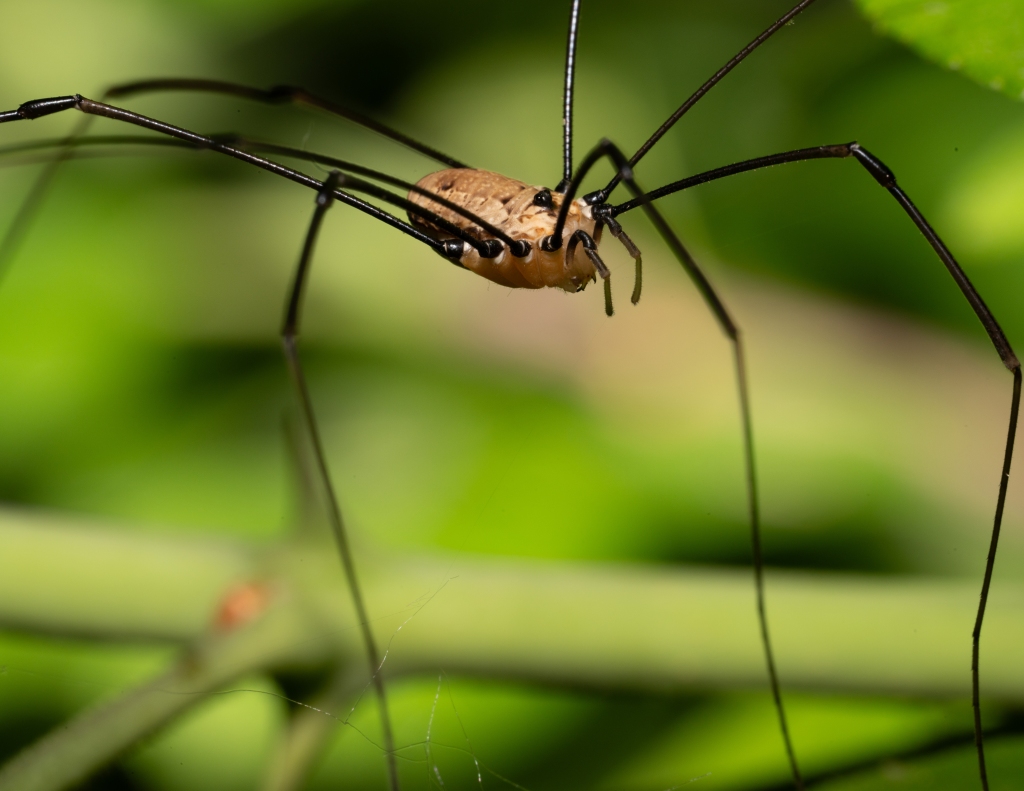
A Harvestman. For a detailed description of the Harvestman anatomy go to ‘https://en.wikipedia.org/wiki/Opiliones_anatomy’. Harvestman is an the opiliones order of arachnids … they aren’t spiders. There are some 6500 species of the opiliones order and probably more. The have relatively a rudimentary eye system as compared to spiders. Watching a Harvestman traverse leaves which requires coordinating 8 spindly legs from a body joints that are only slightly larger than the first leg section’s diameter result in the usual ‘how do they do that’. Their two pedipalps are sensors and grippers. In this photograph the fangs are just visible and are better seen in the next one.
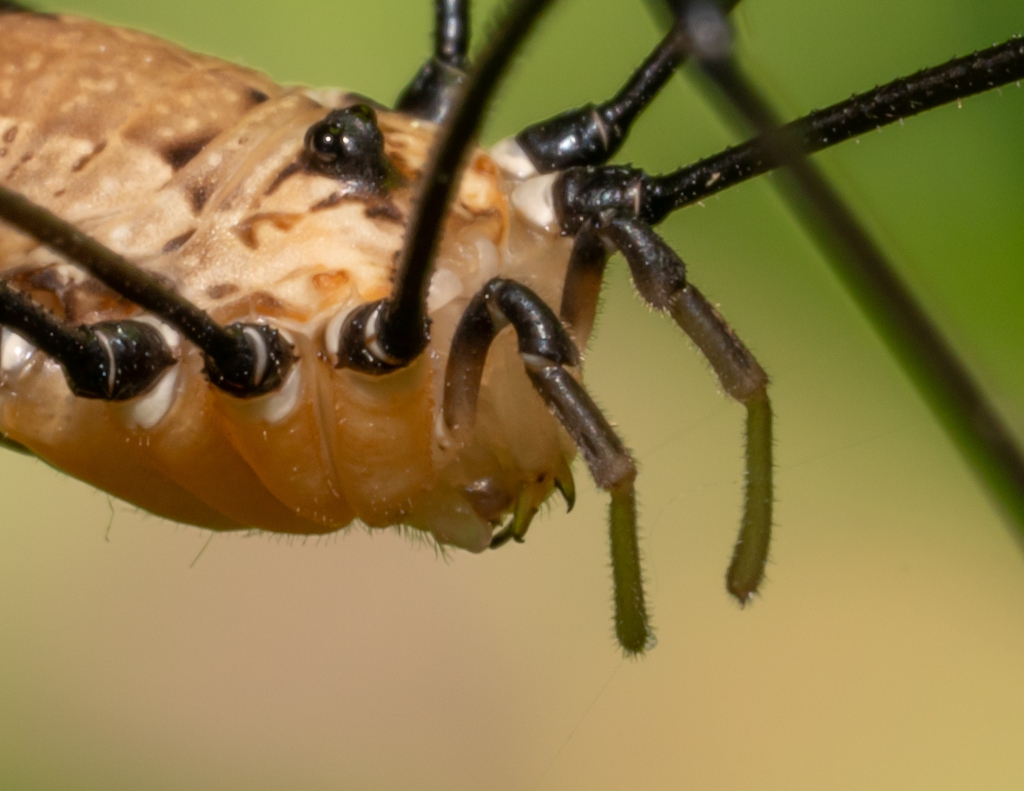
Harvestman eyes, fangs and pedipalps. Contrary to what I was told many years ago, a Harvestman is not venomous. Also, its fangs are too small to cause much of a bite if they can at all.

Seek is not helpful for identification. I would call this a Saber Tooth Beetle. Note the two spiky things on the sides of its mouth area. Another detail of this beetle is that it has only hooks at the end of its legs. Many beetles have hooks and pads; more on these later.

A small but interesting (and unidentified) beetle
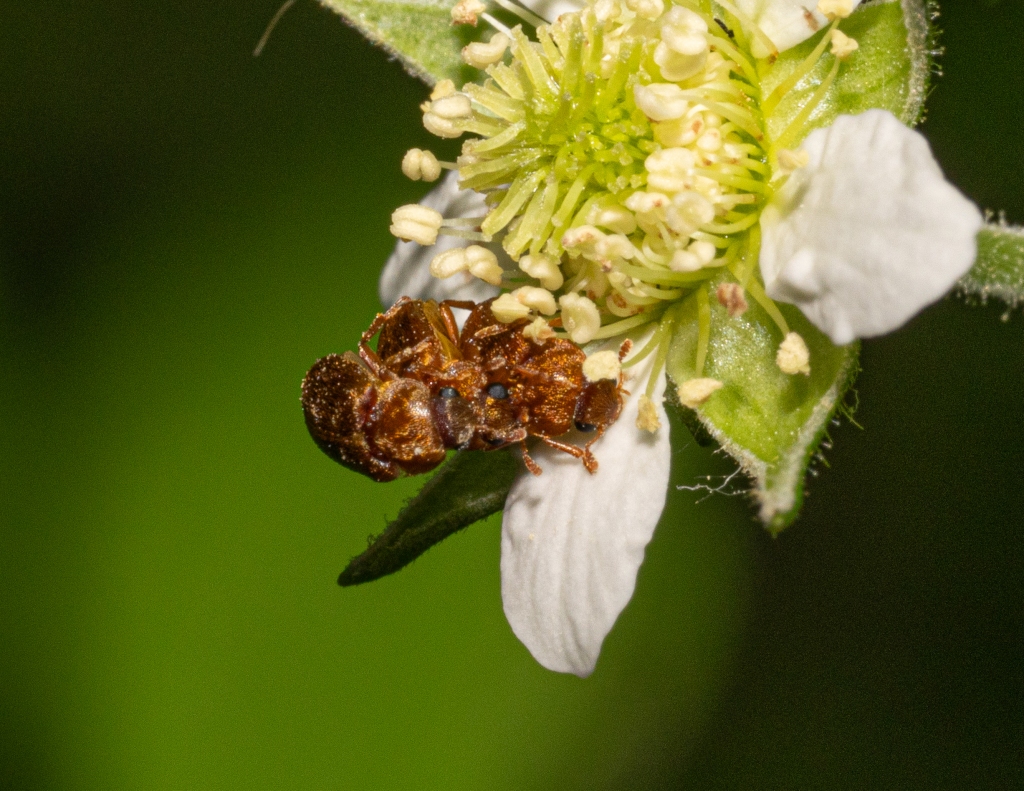
Three beetles in a stack. Might say it’s sort of strange.

A Bristle Fly on the prairie. I’ve seen these a few other times but later in the summer. This fly has small hooks plus small pads on its feet.
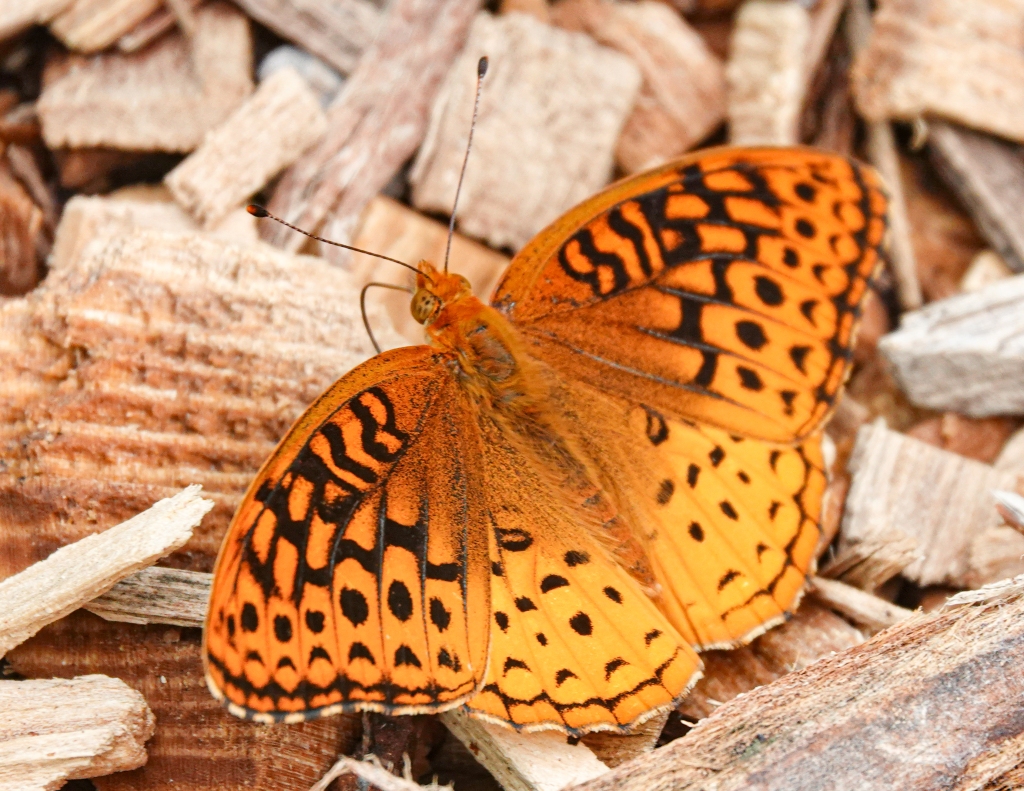
Per Seek a Great Spangled Fritillary. As really important new information … fritillary … any of numerous nymphalid butterflies (Argynnis, Speyeria, and related genera) that usually are orange with black spots on the upper side of both wings and silver spotted on the underside of the hind wing. Per someones obsession with details, the first know use of fritillary w
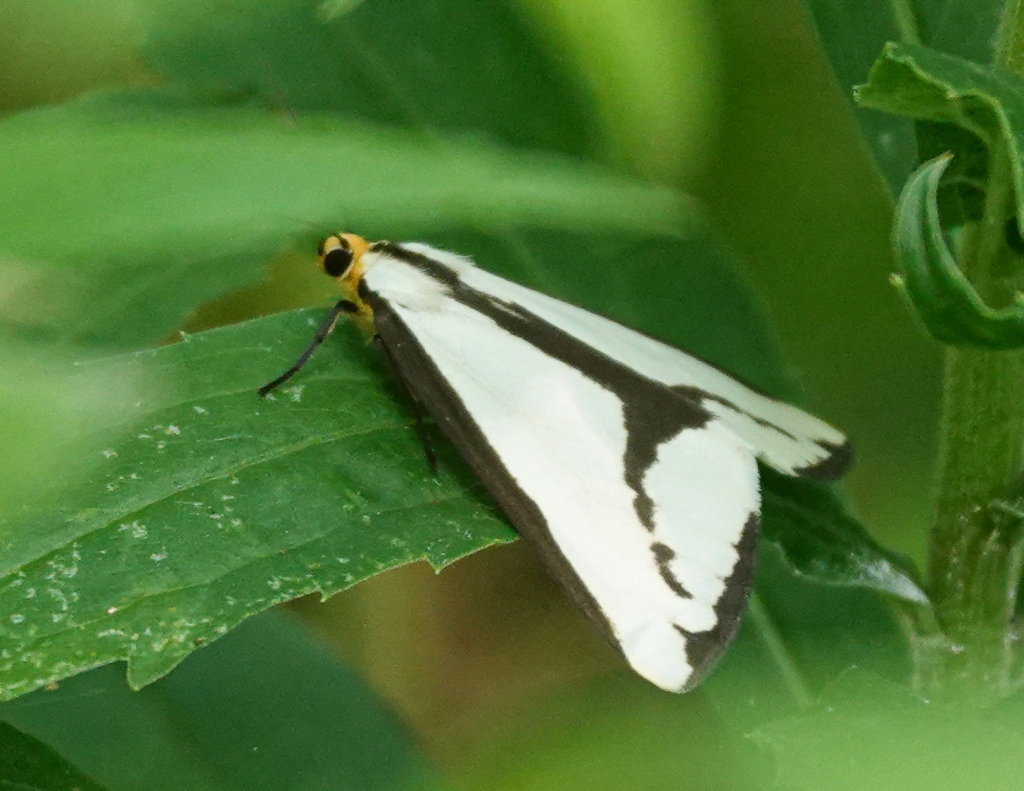
A Leconte’s haploa moth. I’ve seen these every year. Very striking coloration. The name Leconte’s haploa is named after Doctor John Lawrence LeConte who was a physician and an entomologist.

A Mourning Cloak butterfly on the prairie.

A species of wasp.

A fly of some species. Note that its feet are pads with no hooks. Per https://www.smithsonianmag.com/science-nature/foot-fluids-work-surprising-ways-help-insects-stick-walls-180957674/ (2016), scientists have been looking at insect feet for 300 years (since the invention of the microscope) and still aren’t sure how they work. A current explanation is that they use sticky secretions that act like a weak adhesive and take advantage of electrostatic cling and Van der Waals forces.

This is a caterpillar; it was about an inch long with a white hairless body and black head. The mouth section is … interesting as are the pointy protrusions from what I’m assuming are its eyes or maybe they are its eyes. How it attaches to a surface isn’t apparent. Its feet aren’t hooks or, it would appear, furry pads.
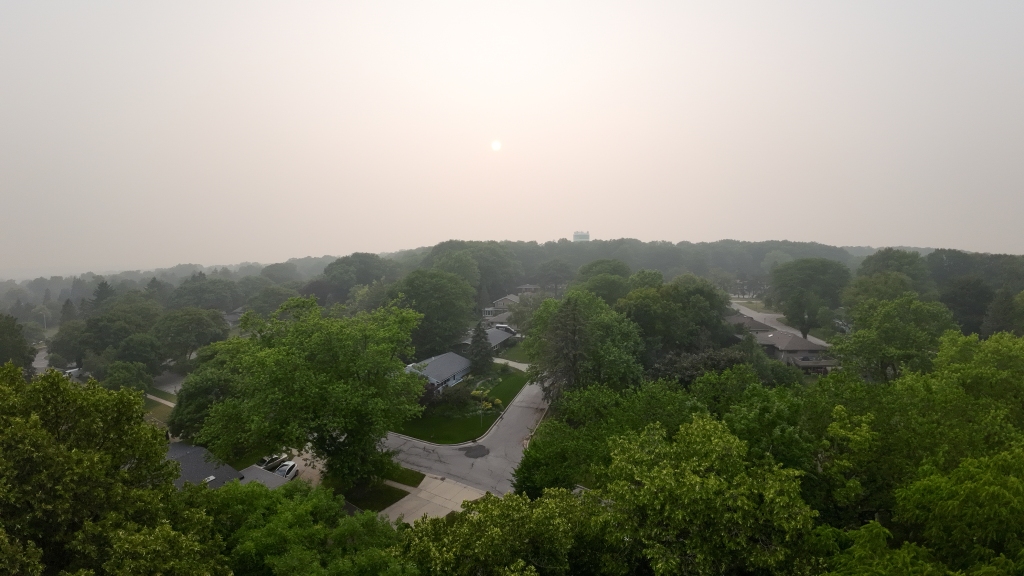
Finally, on a much larger scale, this is what the air with Canadian forest fire smoke looked like in Greendale on June 28.